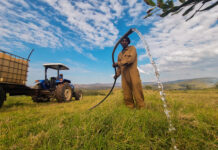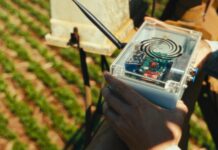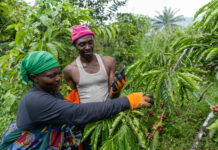The global next-generation packaging market is undergoing a revolutionary transformation, projected to expand from USD 14.55 billion in 2025 to USD 25.5 billion by 2034, growing at a CAGR of 6.43% during the forecast period. This rise is driven by rising sustainability demands, digital transformation across industries, and growing expectations for supply chain transparency. With innovations like active, intelligent, and biodegradable packaging, the market is set to reshape the future of logistics, consumer experience, and environmental impact.
Market Overview: Driving a Smart, Sustainable Future
Next-generation packaging is designed to optimize visibility, traceability, and protection especially for high-sensitivity segments such as cold chain logistics. With smart sensors, RFID, biodegradable films, and active elements that control environmental factors like humidity and oxygen, these packaging systems go far beyond traditional roles of containment and protection.
North America led the global revenue in 2024 due to early adoption of smart technologies and high investment in R&D. However, the Asia Pacific region is set to experience the fastest CAGR from 2025 to 2034, driven by booming e-commerce, rising disposable incomes, and sustainability mandates.
Key Market Segmentation and Insights
Biodegradable and Compostable Packaging Dominated by Material (36% Share in 2024)
Consumer demand for eco-friendly packaging solutions has made biodegradable and compostable packaging a leading material segment. These materials are often made from plant-based sources, mushroom mycelium, or PLA (polylactic acid) and are designed to decompose naturally, reducing landfill waste. Compostable packaging is especially critical for food service and takeaway segments, enabling food-soiled waste and packaging to be processed together in industrial composting systems.
The focus on materials that integrate seamlessly with organic recycling streams eliminates contamination risks, making it a major driver in achieving circular economy goals. With legislation tightening across the EU, UK, and parts of North America, the pressure to adopt plastic alternatives has made this material category an anchor for the market’s growth.
Flexible Packaging Leads by Type Due to Lightweight and Cost Efficiency
Flexible packaging accounted for the largest share in 2024. Its advantages lightweight construction, lower transportation costs, customizable barrier properties, and better shelf space utilization have made it a go-to solution across sectors like FMCG, pharmaceuticals, and pet care.
Flexible packaging’s efficiency also reduces the carbon footprint by requiring fewer raw materials and lower energy consumption during production. Coupled with smart integration capabilities such as NFC labels, freshness sensors, and tamper indicators, flexible packaging serves both functional and interactive roles for manufacturers and consumers.
Smart Packaging to Record Robust CAGR from 2025 to 2034
The smart packaging segment comprising intelligent and active packaging technologies is set for explosive growth. These systems are embedded with IoT components, condition-monitoring indicators, and interactive communication tools, allowing brands to track goods in real-time and engage with end-users post-purchase.
RFID tags, temperature-sensitive labels, time-temperature integrators, and QR codes empower supply chains with data-driven insights. Brands can monitor the freshness of food, compliance of pharmaceuticals, or authenticity of luxury goods across global logistics routes. Additionally, the integration of machine learning and AI now enables predictive modeling to improve packaging material selection and minimize waste.
Food & Beverages Held the Largest Application Share in 2024
In 2024, the food and beverages industry dominated market revenue due to increased demand for longer shelf life, transparency, and food safety. Active packaging has helped reduce oxidation, moisture damage, and microbial growth.
Meanwhile, intelligent packaging solutions offer real-time freshness indicators, allowing consumers and retailers to assess product safety at a glance. As regulatory pressure increases globally to reduce food waste, next-generation packaging is emerging as a powerful enabler of sustainability, brand trust, and compliance.
Pharmaceuticals & Healthcare to Witness Highest Growth by 2034
The pharmaceutical and healthcare industry is experiencing a digital transformation powered by smart packaging. With the need for temperature-sensitive delivery, counterfeit protection, and dose adherence, packaging has evolved into a therapeutic interface.
From vaccine transport monitoring to interactive pill containers with dosing alerts, next-gen packaging ensures regulatory compliance, patient safety, and drug efficacy. The COVID-19 pandemic served as a critical accelerator for adopting packaging that provides tamper evidence, traceability, and environmental resilience.
Primary Packaging Dominated in 2024, Secondary Packaging Gaining Momentum
Primary packaging, which directly encloses the product, contributed the highest share in 2024. Its evolution includes the use of biodegradable films, mono-material structures, antimicrobial coatings, and embedded sensors that provide data on product integrity. The rise in demand for child-resistant, tamper-proof, and easy-open designs further strengthens its dominance.
Secondary packaging, which plays a critical role in branding and logistics, is gaining prominence with features like smart labels, modular designs, and recyclable outer packaging. With e-commerce skyrocketing, secondary packaging now carries the dual role of protective containment and brand storytelling, especially in direct-to-consumer models.
Direct-to-Consumer Distribution Channel Surpasses Traditional Retail in 2024
The direct-to-consumer (D2C) channel led all others by revenue in 2024. D2C brands prioritize sustainable, personalized, and traceable packaging, giving them full control over customer experience and supply chain data. With custom printed boxes, QR-linked content, and eco-conscious mailers, packaging has become a medium for brand interaction and differentiation.
This channel also leverages smart packaging to reduce failed deliveries, lower return rates, and enhance customer satisfaction. Meanwhile, retail packaging is catching up by integrating QR codes, RFID systems, and smart tags to improve inventory tracking, product education, and visual shelf appeal.
Artificial Intelligence in Packaging: Revolutionizing Sustainability and Performance
AI integration is a disruptive force in next-generation packaging. Machine learning models can simulate the behavior of packaging materials under different environmental conditions temperature, pressure, moisture, vibration to identify optimal material compositions. This ensures minimal material usage without compromising durability or safety.
AI also enhances real-time supply chain optimization, predictive maintenance of cold chain logistics, and automated recycling systems. Smart sensors generate vast data, which AI systems analyze to forecast performance, detect tampering, and alert stakeholders to anomalies helping reduce waste, spoilage, and cost.
Regional Outlook: North America Dominates, Asia Pacific Accelerates
North America
North America led in revenue in 2024 due to strong infrastructure, strict regulatory frameworks, and high innovation capacity. The U.S. and Canada are pioneers in adopting IoT-based packaging, blockchain integration for traceability, and compostable packaging laws. Supportive governmental initiatives and presence of global packaging giants like Amcor, Sealed Air, and 3M drive continuous growth.
Asia Pacific
Asia Pacific is projected to grow at the fastest CAGR through 2034. Countries like China, India, Japan, and South Korea are experiencing surging demand from e-commerce, urbanization, and healthcare infrastructure. Governments are pushing for reduction in plastic usage, prompting startups and established players to invest in green packaging solutions. APAC’s affordability in manufacturing also boosts the scale of deployment across industries.
Conclusion
The next-generation packaging market is at the crossroads of sustainability, smart technology, and global logistics optimization. From flexible films that minimize waste to AI-powered packaging that enables real-time monitoring, every aspect of the supply chain is evolving. As demand grows across food, healthcare, retail, and logistics, businesses that invest in smart, sustainable, and scalable packaging solutions will lead the market through 2034 and beyond.








